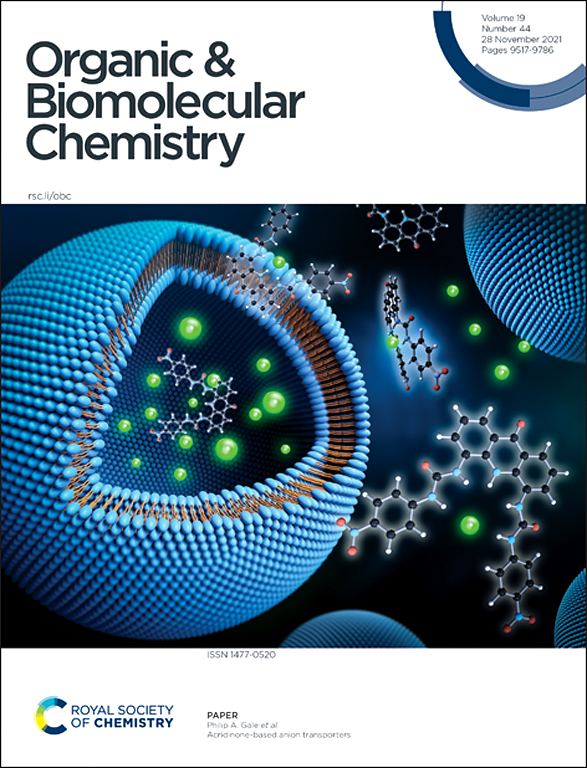利用手性助剂非对映选择性合成(Z)-氟烯烃二肽同位异构体。
IF 2.7
3区 化学
Q1 CHEMISTRY, ORGANIC
引用次数: 0
摘要
建立了一种非立体控制合成(Z)-氟烯烃二肽同位异构体(FADIs)的方法。采用本研究的方法,以Ellman亚胺对应n端氨基酸残基,Oppolzer sultam对应c端氨基酸残基,构建了两个氯烯二肽同位异构体(CADIs)的手性中心,以立体控制的方式获得了具有高非对映选择性的拟二肽。本文章由计算机程序翻译,如有差异,请以英文原文为准。

Diastereoselective synthesis of (Z)-fluoroalkene dipeptide isosteres utilizing chiral auxiliaries†
An efficient method for diastereo-controlled synthesis of (Z)-fluoroalkene dipeptide isosteres (FADIs) was developed. Two chiral centers were constructed by applying our synthetic methodology for chloroalkene dipeptide isosteres (CADIs) using Ellman's imine for corresponding to the N-terminal amino acid residues and Oppolzer's sultam for corresponding to the C-terminal amino acid residues, affording dipeptidomimetic in a stereocontrolled manner with high diastereoselectivity.
求助全文
通过发布文献求助,成功后即可免费获取论文全文。
去求助
来源期刊

Organic & Biomolecular Chemistry
化学-有机化学
CiteScore
5.50
自引率
9.40%
发文量
1056
审稿时长
1.3 months
期刊介绍:
Organic & Biomolecular Chemistry is an international journal using integrated research in chemistry-organic chemistry. Founded in 2003 by the Royal Society of Chemistry, the journal is published in Semimonthly issues and has been indexed by SCIE, a leading international database. The journal focuses on the key research and cutting-edge progress in the field of chemistry-organic chemistry, publishes and reports the research results in this field in a timely manner, and is committed to becoming a window and platform for rapid academic exchanges among peers in this field. The journal's impact factor in 2023 is 2.9, and its CiteScore is 5.5.
 求助内容:
求助内容: 应助结果提醒方式:
应助结果提醒方式:


